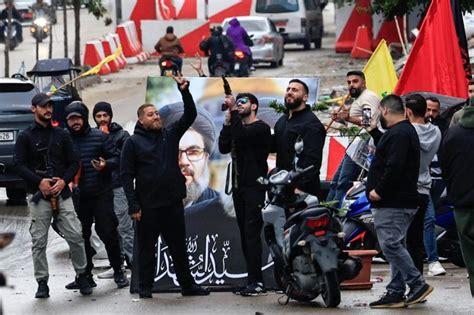
Lebanon ceasefire done, what’s holding up Gaza ceasefire?
Even as Israel and Hezbollah have accepted a ceasefire, the main conflict in the region, the Israel-Hamas War in the Gaza Strip, continues unabated.
Both Israel and Hamas, the Iran-backed and Gaza-based terrorist group, continue to blame the other for the failure to reach a ceasefire deal.
The yearlong war in Gaza has devastated the Palestinian enclave and has killed several thousands of civilians. Most of the Gaza’s population has been displaced by the fighting and the humanitarian disaster is such that a senior United Nations (UN) official warned there was a “full-blown” famine in the region.
Now, after the signing of the ceasefire deal between Israel and Hezbollah, there is hope that progress would be made in indirect talks between Israel and Hamas as well — both sides have given promising signals.
While a Hamas official said that the group is “ready” to agree to a “serious deal” for a ceasefire, Israeli Defence Minister Israel Katz has said that negotiating a hostage deal is the top priority of his government now.
However, there are several roadblocks for the realisation of any deal between Israel and Hezbollah.
The deadlock around hostages & prisoners
The basis of any deal for Gaza is the release of hostages held by Hamas in lieu of a ceasefire and the release of certain Palestinian prisoners held in Israel.
There has been deadlock around how many prisoners and hostages would be swapped. At times, Israel has also expressed a desire to veto the release of certain prisoners convicted of grave crimes. Moreover, there has also been disagreement over how certain prisoners would be released — whether they would be released in Gaza or exiled abroad.
In the original Israel-endorsed ceasefire proposal outlined by US President Joe Biden in May, in the first round of ceasefire, around 33 hostages in humanitarian category were to be released in lieu of at least 50 Palestinian prisoners serving life sentences either abroad or in Gaza. In July, Netanyahu amended the proposal and said that Israel would only release such prisoners abroad.
The amendment was part of a set of demands inserted by Netanyahu into May’s proposal in July that essentially tanked the talks with Hamas for months. It was only after the elimination of top leaders of Hamas, Hezbollah, and damaging attacks on Iran that Hamas returned to the negotiation table under pressure.
Of around 250 hostages initially taken by Hamas, around 100 are still held in Gaza, a third of whom are believed to have been killed. At times, Hamas has expressed inability to locate all hostages or have enough alive hostages from the ‘humanitarian’ category. The issue is primary for Israel and the United States.
In his address from White House after the Israel-Hezbollah deal was signed, Biden said that the only way for a ceasefire in Gaza is the release of hostages.
“Now Hamas has a choice to make. Their only way out is to release the hostages, including American citizens which they hold, and, in the process, bring an end to the fighting, which would make possible a surge of humanitarian relief,” said Biden.
Israeli military presence & issue of Gaza-Egypt border
While the presence of Israeli armed forces inside Gaza after a ceasefire is a non-starter for Hamas, Netanyahu has stressed it is required.
In the new demands inserted into the ceasefire proposal in July, Netanyahu insisted that Israeli military would be present in at least two areas of Gaza: the Philadelphi Corridor along the Gaza-Egypt border and east-west Netzarim Corridor within Gaza to screen Gazans returning home for weapons and terrorists.
The issue of aid
There are also disagreements regarding the distribution of humanitarian aid in Gaza.
While the preferred medium, the UN Palestinian refugee agencies UNRWA, is unacceptable to Israel, the alternatives presented by Israel are also deemed unrealistic by critics.
For example, there have been reports that Israel has considered the distribution of aid by private organisations under security provided by Israeli soldiers. Such an approach would mean that Israeli military would continue to operate inside Gaza and render the ceasefire meaningless.
Former Israeli Defence Minister Yoav Gallant, whom Netanyahu fired earlier this month, has said that such an arrangement would be a euphemism for Israeli military occupation of Gaza.
Source » firstpost.com





